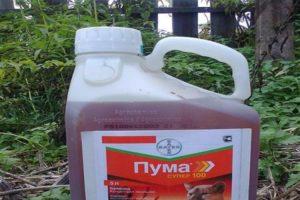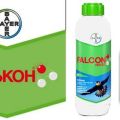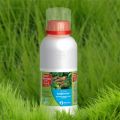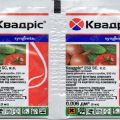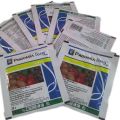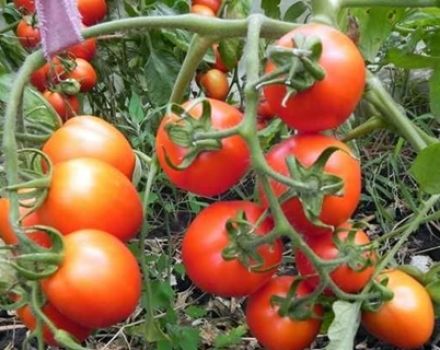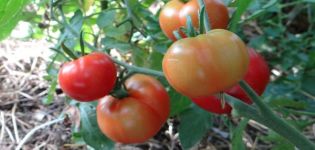Instructions for the use of fungicide Switch, consumption rates and analogues
Every novice and experienced gardener has faced various diseases in their own garden, often occurring after a long period of rains, temperature fluctuations and many other unforeseen natural phenomena. Diseases of fungal origin cause irreparable harm to plants and trees, and reduce productivity. Preventive treatment using the Switch fungicide, diluted in accordance with the instructions for use, reliably protects them.
Content
- 1 Composition and form of release of the fungicide "Switch"
- 2 The mechanism of action of the drug
- 3 Benefits of a fungicide
- 4 Scope of use
- 5 Consumption rate for different plants
- 6 Recommendations for the use of the mixture
- 7 Security measures
- 8 Toxicity
- 9 Can it be combined with other products?
- 10 How long and how to store
- 11 Analogs
Composition and form of release of the fungicide "Switch"
An excellent option for the treatment of fruit, gray rot and a number of other diseases of fungal origin is the fungicide "Switch". The high efficiency of the drug is due to the presence of two potent components in its composition:
- fludioxonil is a contact agent;
- cyprodinil is a substance of systemic action.
The drug goes on sale in the form of granules that dissolve well in water. For large agricultural producers, it is packed in plastic containers of one kilogram. For individuals and small farms, it is more convenient to use small foil bags in which the drug is packaged in 10 grams.
The mechanism of action of the drug
"Switch" is a unique drug. It combines two active substances characterized by high efficiency against pathogenic organisms. Cyprodinil blocks the development of fungi at the stage of penetration into plant tissues and prevents their further growth. Fludioxonil stops spore germination and prevents mycelium growth.
The drug is highly effective against Ascomycetes and Deuteromycetes fungi.
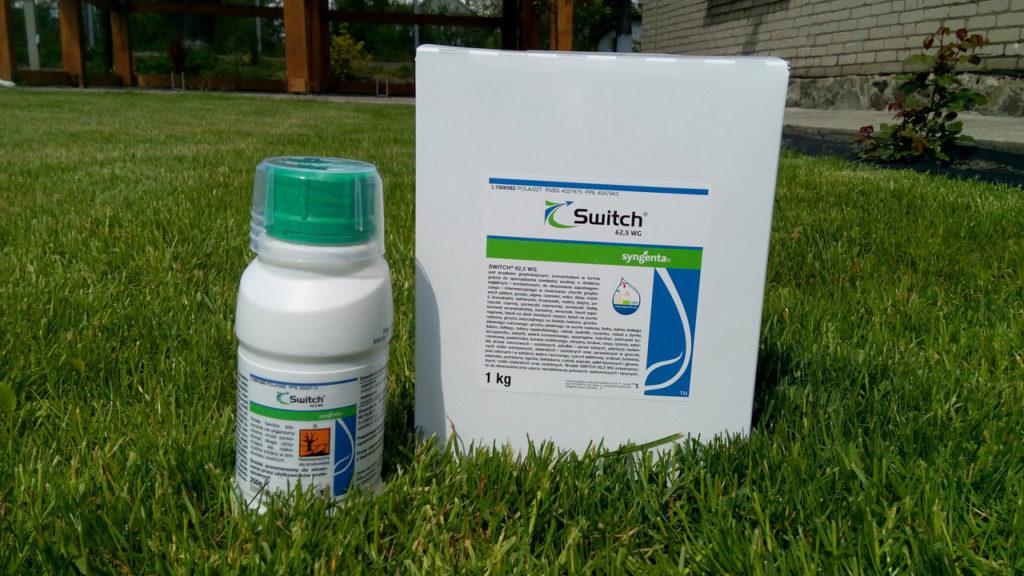
Benefits of a fungicide
Fungicide "Switch" differs from other drugs in a number of advantages:
- suitable for spraying various crops as a prophylactic and therapeutic agent, while treatment is possible even during the flowering period;
- used for seed dressing;
- not addictive and equally effective with repeated use;
- does not reduce its protective properties when the temperature drops and high humidity;
- begins to actively act two hours after spraying;
- the protective period is up to 20 days;
- prolongs the shelf life of perishable fruits and berries, facilitates their transportation;
- slightly toxic to humans and animals.

The drug does an excellent job with the tasks, therefore it quickly gained popularity among plant breeders.
Scope of use
"Switch" copes well with many diseases:
- rot;
- brown and white spots;
- moniliosis;
- ascochitis;
- alternaria;
- powdery mildew.
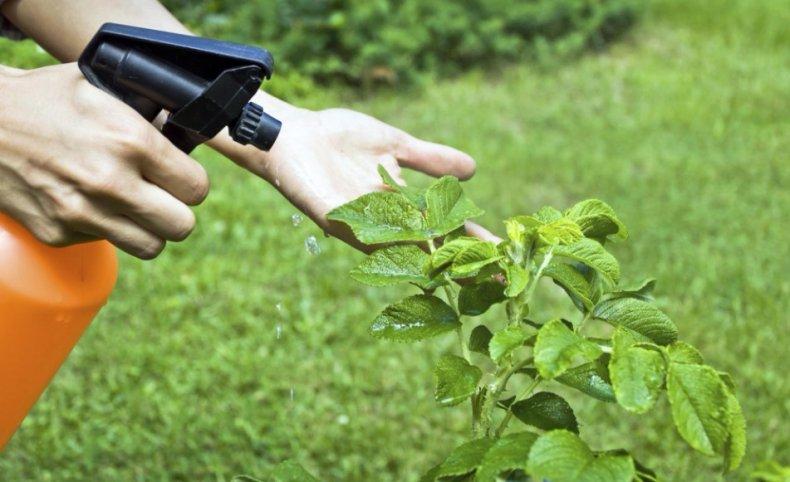
The fungicide is actively used to protect tomatoes, vineyards, strawberries, peas, beans, cucumbers, and fruit trees. Florists use it effectively to spray roses.
Consumption rate for different plants
This unique preparation is equally effective in the treatment of various plants.
Consumption rates for each type of plant
| Culture | Working solution, grams per 10 liters of water | Consumption rate of the finished solution | Validity period, days |
| Plum, peach, cherry, apricot | 10 | 2-5 liters per tree | 20 |
| Pear, apple tree | 10 | 2-5 liters per tree | 15 |
| Roses | 10 | 0.5 l per bush | 15 |
| Strawberry | 20 | 3-5 liters per hundred square meters | 7 |
| Cucumbers, tomatoes, | 20 | 5 liters per hundred square meters | 10 |
| Grapes | 20 | 5 liters per hundred square meters | 21 |
Recommendations for the use of the mixture
To protect strawberries from fungal diseases, preventive treatment is performed twice a season: in early spring, before the first flowers appear, and after the end of the flowering period.
Roses are sprayed during the budding period. Cucumbers and tomatoes - during the growing season.
To protect the grapes, the first treatment is carried out at the end of flowering, the second - shortly before the formation of bunches. On fruit trees, spraying is carried out no more than two times. The last processing is carried out no later than 20 days before the start of the harvest.

How to apply on the site?
The solution is prepared just before spraying and is fully used on the day of preparation. To dilute the drug, take a special container, which is subsequently burned. Plants are sprayed in the morning or evening in calm weather, since when processing during strong winds, partial ingress of the solution to neighboring crops is possible. Spraying is carried out no more than two times per season.
The drug is not used near water bodies. The minimum distance to the coast is two kilometers.
Security measures
During processing, safety measures are observed and personal protective equipment is used. During this period, it is forbidden to drink, eat and smoke. After work, wash thoroughly with soap.

Processing is carried out carefully. When the solution hits a person, work is stopped. The eyes are washed with clean running water and immediately seek help from an ophthalmologist. The affected skin areas are washed with clean water, avoiding rubbing movements. Then the skin is thoroughly washed with detergents.
Toxicity
Fungicide "Switch" is safe for bees and other insects. Low toxic and safe for humans. Not phytotoxic to plants.
Can it be combined with other products?
Plant breeders practice joint treatments with "Switch" with pesticides, copper-containing preparations and other fungicides.
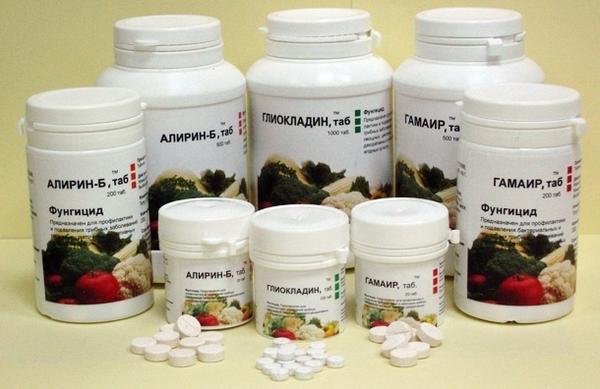
How long and how to store
The recommended storage temperature for the Switch fungicide in an integral package is not lower than -5 ° С and not higher than +35 ° С. The drug does not change its properties and is equally effective for four years.
Analogs
Thanks to its prophylactic, protective and medicinal properties, the fungicide "Switch" is unique and has no analogues. He will come to the rescue, prevent disease and save the crop in any growing season when the use of other drugs is impossible.
